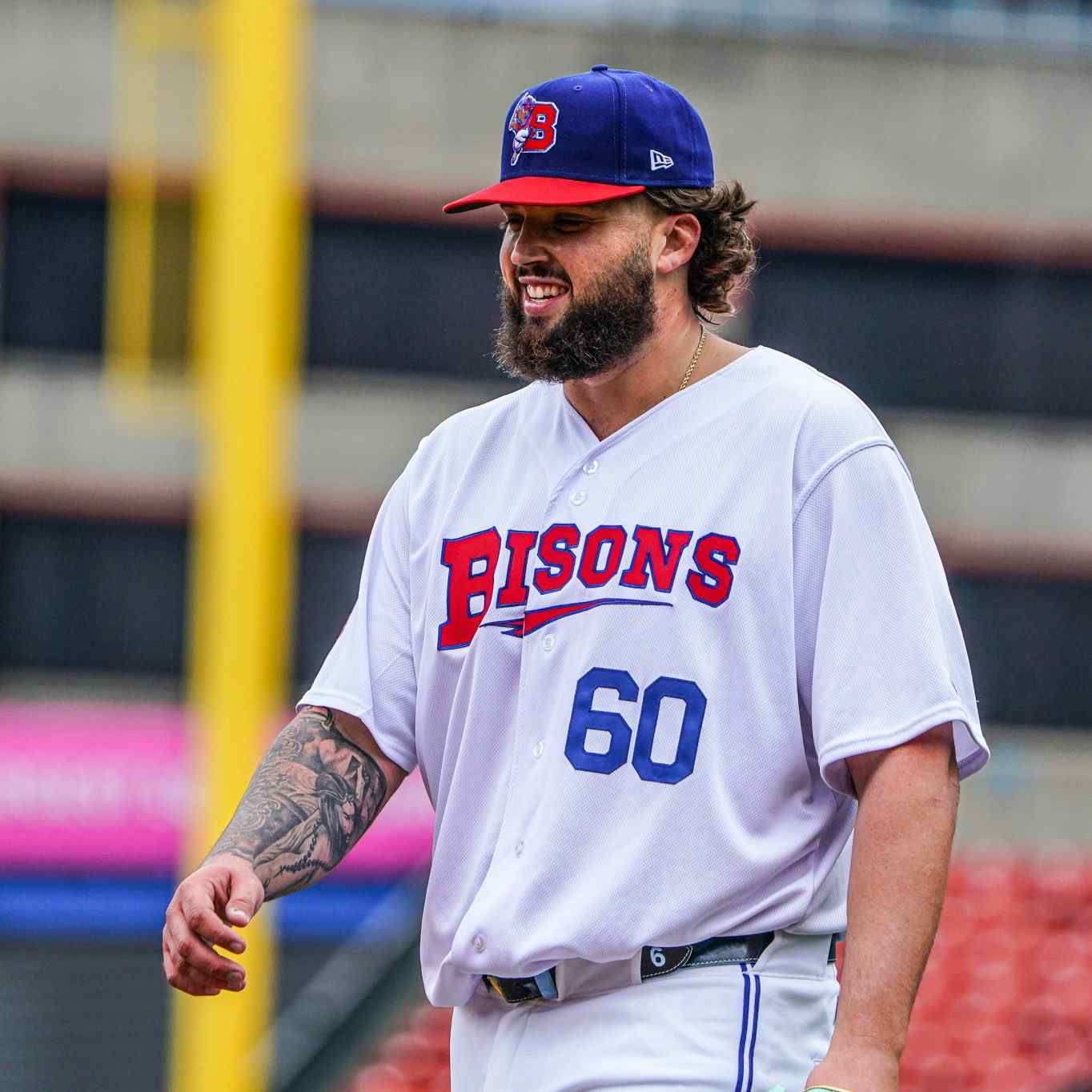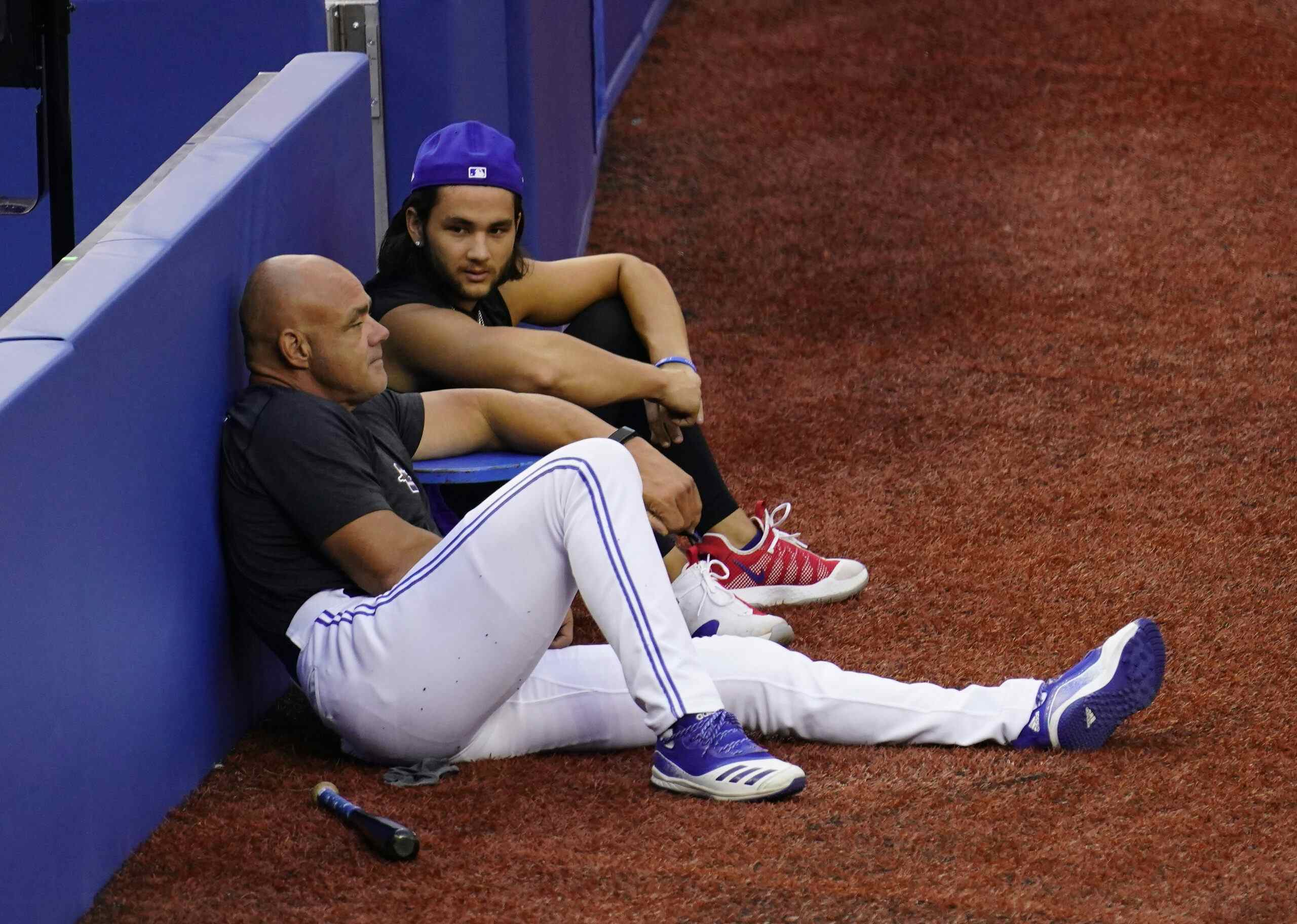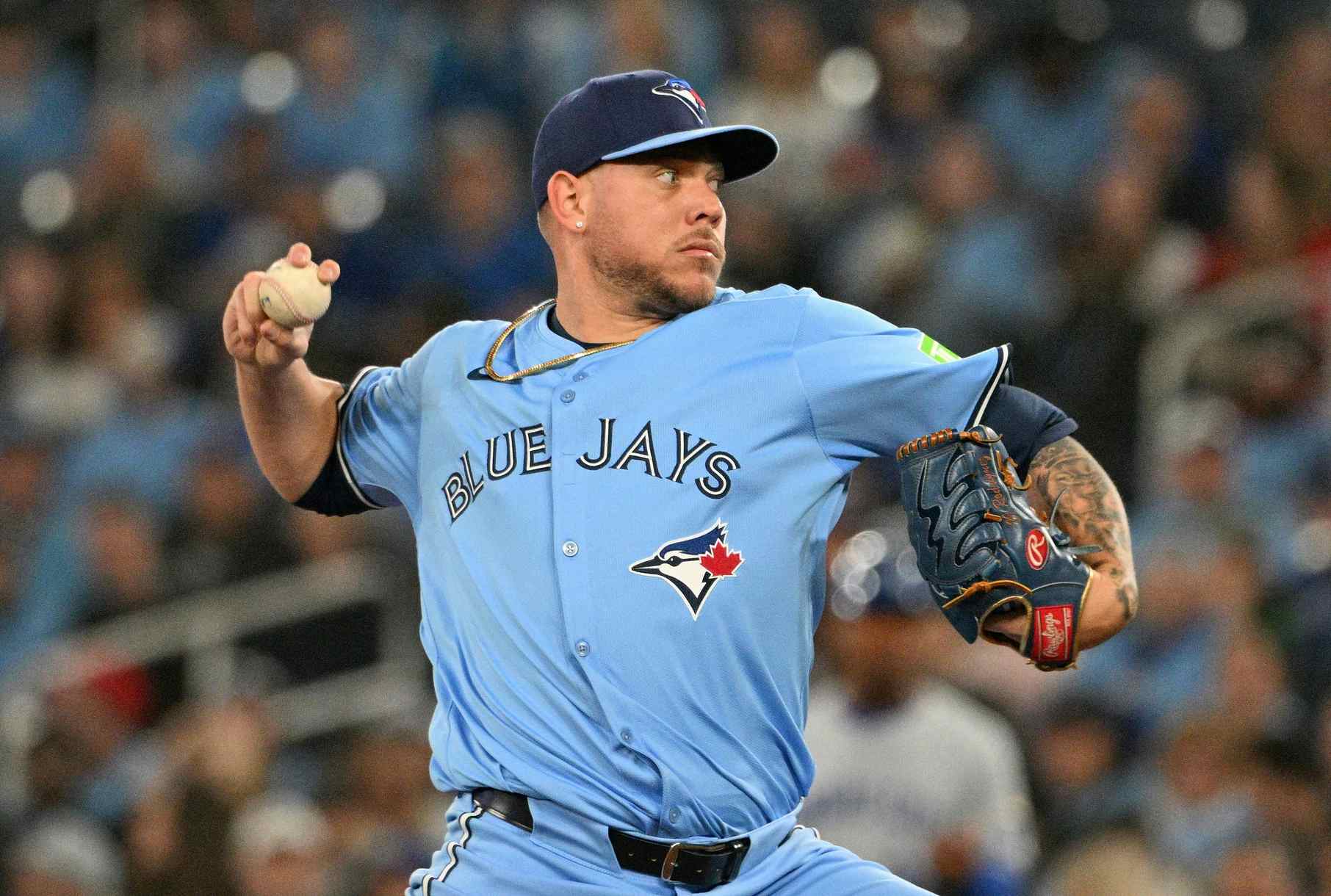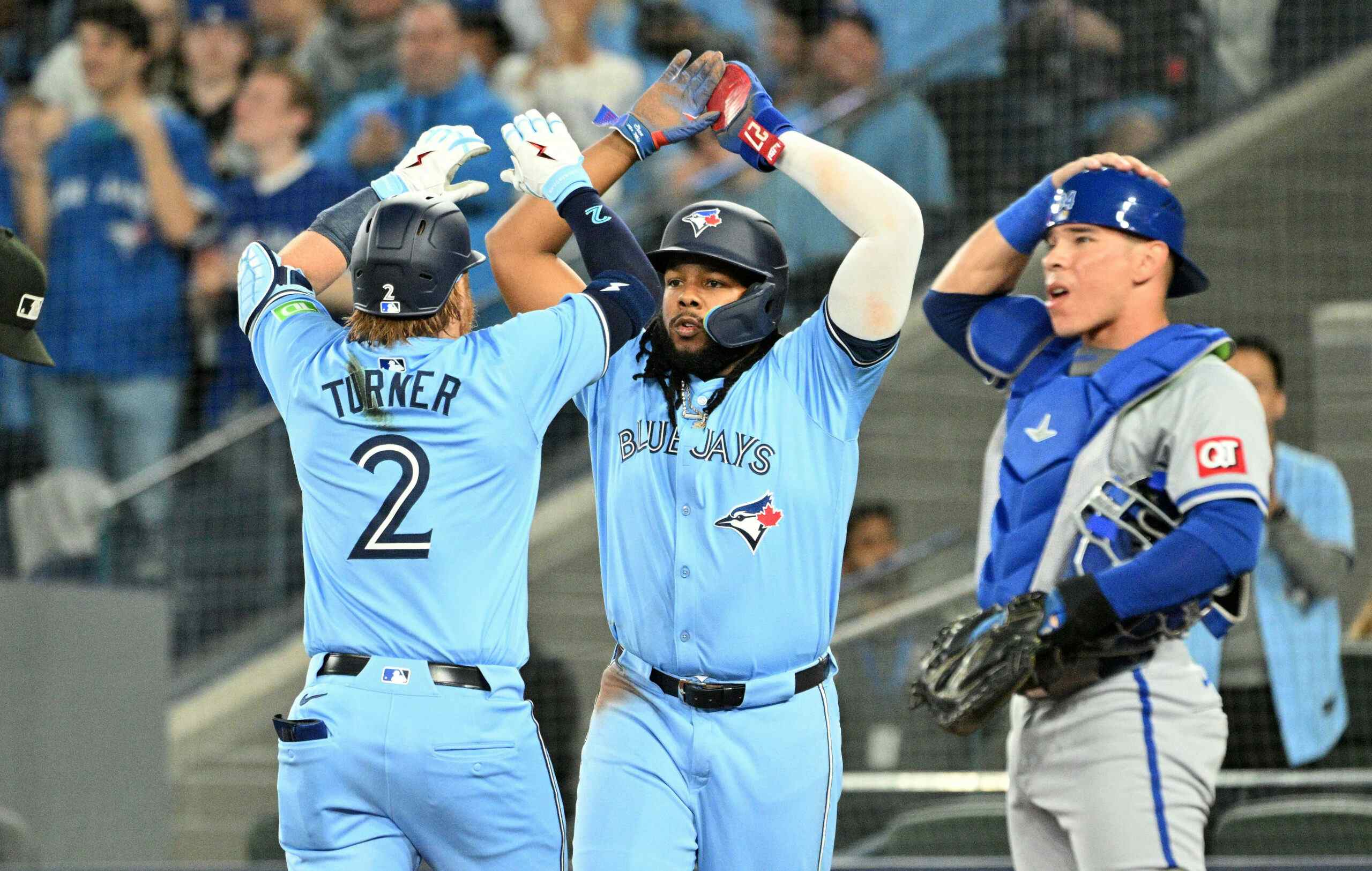Shapiro Speaks!: On Encarnación, Bautista, the Bullpen, and the Big Picture

Photo Credit: Dan Hamilton-USA TODAY Sports
Mark Shapiro spoke with Jeff Blair and Stephen Brunt for twenty minutes Friday morning on Blair’s Fan 590 show, and while the Blue Jays president and CEO didn’t do much to tip his hand as far as where the club’s still-evolving off-season is going, there was a whole lot that he said that I think is worth examining.
There was the obvious — saying, “I would encourage you not to think this body of work is done,” about the off-season, for example — and a bunch of Bautista and Encarnación stuff that will certainly be what most fans are curious to hear. But there were some big picture things that were rather fascinating, as well.
Of course, we’ll start with the juiciest bits:
On Edwin…
Shapiro said that what ultimately happened with Encarnación was “somewhat unfortunate for him,” but didn’t back down from how the club handled the negotiations at the time — even as he fully admitted he’d have done things differently with the benefit of hindsight.
We could have gambled, we could have waited, and I guess, in hindsight, giving me all the information now, if we knew [the market] was going to do this — that’s kind of a silly question — absolutely we would have done it differently. But we didn’t have all the information, and I think it was important for us to have a plan. As you negotiate it’s always important to have walk-aways and to have alternatives, and if you don’t have those two things you’re not going to have a successful outcome. So we went to an alternative, which didn’t close the door on Edwin but made it more limited to what we could do in signing him.
Love you, though, Kendrys!
But seriously, I think that’s all completely reasonable… right up until the last sentence. If Shapiro was talking about not having enough 2017 budget left to give Edwin what he wants and still fill other holes, I’d get it. But was he?
I wrote about the odd explanation of this last month, when I took on some of the spin coming from the various camps in the wake of Edwin’s deal with Cleveland:
We’re told [in a Sportsnet piece from Shi Davidi about the negotiation timeline] that the Jays were indeed talking still to Edwin’s camp after Kendrys Morales (who definitely had a lot of interest from other teams!) was signed, with the thought being that they could trade Justin Smoak to accommodate bringing him back. However, by then the $80 million deal was off the table. Fair enough, given the way his market was going, I guess? But then later we get this:The Jays sign Steve Pearce and the “the Encarnacion camp is blindsided, as a meeting with the Blue Jays is scheduled for the next day.” Now, “with Morales and Pearce already on the roster, the only realistic scenario for the Blue Jays is a one, maybe a two-year deal.”I… it… ahh… huh???If you can fit Edwin for 2017, and you can maybe fit him for 2018, and you no longer employ an obstacle in the form of Pearce in 2019, uh… why can you now only offer him a one- or two-year deal? What am I missing here?
Shapiro’s talk today definitely didn’t fill in any of those gaps. Then again, he wasn’t saying what Shi’s report did about only a one- or two-year deal being all that was realistic at that point. (Which I guess is good, because it makes no goddamned sense.)
“There’s not an expert, there’s not an agent, there’s not a team that thought the market would go the way it did — certainly not Edwin’s agent. And certainly not Edwin,” Shapiro also said. “At the time we talked to Edwin two weeks after we’d made that offer to Edwin, three weeks after we made that offer to Edwin, a month after we’d made that offer to Edwin, he still thought he was going to get far more dollars than what we offered, by the way. What we offered. Far more. And he ended up signing for less than we offered.”
Y’know, just in case you were unclear.
Y’know, just in case you were unclear.
Shapiro said those words with a smile, but seeing them written down it’s not difficult to see “You fucked up, Paul Kinzer” between the lines. And if that wasn’t a slight dig at Edwin’s agent, at the very least this was: “Maybe Edwin’s situation played out more publicly, both because of the people that were involved and the market here, but Mark Trumbo’s situation is very similar.”
You’re right about at least one thing there, Mark. This is definitely a huge market that your team is playing in and reaping the financial benefits of. *COUGH*
On José…
Shapiro’s comments on Bautista were a little bit strange, and certainly didn’t discourage anyone (read: me) from thinking that maybe the fact is they simply don’t want him back because he’s exhausting to be around. I’ve certainly heard rumours to that effect, as I’ve mentioned a couple times of late.
I think it would be particularly stupid if that were the case — whatever ill effect José might have on the clubhouse certainly didn’t prevent the Jays from being wildly successful these last two years — and I’m sure there is also an element of the draft pick penalty that weighs into it as well, but I’m not sure what else we’re to make of a thing like this:
I would just say that we need a corner outfielder, right? [Note: you actually need two — Ed.]. And José is probably the most talented one out there, as far as offensive production goes, and track record, and then on top of that he’s got a premium in this marketplace because of what he’s meant to this franchise over the last eight seasons, and who he is in this market and the impact he’s made in the community here. You take all those things up, and for me not to say he would be a good alternative for us for next year would be a mistake. So I think, among the alternatives, he’s certainly, if not the best, one of the best.
Uhh… alternatives to what, exactly?
Currently he’s the alternative to literally nothing. And while maybe this is something I’m reading into a little too much, notably absent from this list of Bautista’s assets is anything remotely to do with his presence in the clubhouse — about leadership, about his being a veteran, or about him not, y’know, not being a pain in the goddamned ass.
That said, when speaking about the bullpen, Shapiro later said that the front office had “made a decision at that point — that’s still fluid — that we’re going to look to impact the team in the way that can bring the most wins. Not necessarily fill holes, the most wins.”
In a tweet, Jon Morosi interpreted that as Shapiro saying that the club had targeted “free agents who would add the most WAR per dollar.” If that’s an accurate interpretation, the draft pick penalty certainly throws Bautista’s equation out of whack.
And as to the notion that Bautista might not have a penalty, because he’d be willing to wait until after the draft to sign somewhere, Shapiro got real very quickly.
“I think at his age, where he is in his career, for him to sit out for three months… — you really need to talk to him about that, not to us — but it’s not a scenario that we have factored in,” he explained.
José’s best course of action still seems, at least to me, to be to sign for a year and hit the market again next winter. Missing that much time and not having a proper Spring Training likely doesn’t help him very much — it certainly didn’t for Kendrys Morales in 2014, when he waited until after the draft to sign and was an absolute disaster (save for his debut series at Rogers Centre with the Twins, where he fuckin’ killed the Jays).
Perhaps this is Shapiro’s way of making clear that whatever they might be willing to offer him, it’s going to have the pick heavily accounted for. “That draft pick is meaningful, it’s material, it has real value,” he said. “But at the same time, so does bringing back José, both in what he could contribute offensively and what he means to the community here.”
Perhaps they’re just playing hardball and waiting for Bautista to accept that there isn’t any other alternative for him? I don’t even know anymore…
On the bullpen…
Though I’m sure there have been a few weirdos howling about the club’s lack of movement in the bullpen, Shapiro very clearly understands what most of us understand about all that.
“It quickly became clear that there was not a lot of value in the bullpen marketplace,” he explained.
We still feel like there are some good options out there in the bullpen. We’ll probably have to work, budgetarily, off of what we decide to do in the outfield, and where we spend and how much we spend on the outfield. So that will impact what we have and what we’re able to do in the bullpen. And then secondarily, on the bullpen, I would say this to you: that it’s the most unpredictable, it’s the most, year-to-year, erratic, from a planning perspective. Every single year there are guys that people count on to be contributors out of the bullpen who do not. [Note: *COUGH* Drew Storen *COUGH* — Ed.] And there are guys who end up impacting in a major way — such as a Biagini — that no one has even heard of or expects, prior to starting the year. So I think of bullpen construction as something that’s fluid. You walk into Spring Training thinking your bullpen’s set, and we certainly felt very good last year, and we looked up — and I think everybody did, go look at what was being written about the bullpen last year — and we certainly found out that the reality was not what we thought.
You’d like them to spend what they need to on every area that needs more talent, and with Rogers being their owner and the last two years being what they were, they damned well should be able to. But that’s not reality, and based on reality Shapiro absolutely should be looking to the outfield first and trying to build the bullpen on the cheap and on the fly.
Might that mean doing what Alex Anthopoulos used to do, and looking to some of the best prospects in the system to rush into big league relief roles? Certainly not! But… uh… maybe?
I don’t believe in absolutes, but that would be highly unlikely. When you start to rush guys to that level at some point you’re cheating the foundation that they need to develop, and you’re either putting in a risk of injury or you’re putting them in a position where they’re going to have some setback, even if they have short-term success. And it’s going to make it harder to finish them off. Development at the Major League level is a very, very difficult thing to do. For most guys it’s about survival, and if they’re really talented, it’s about making adjustments. I think in order to just have a player at a point where he can make adjustments, he’s got to have a really strong foundation — which means a certain number of innings, a certain number of starts. That being said, if there’s a young guy who shows the ability to command the fastball, and control or command of a secondary pitch to get swing-and-miss with, then maybe you can say, “Hey, he’s not a finished product, but it’s good enough that we can bring him up.”
I’m inclined to believe that in that last bit he’s talking more about warm body types, and not prospects like Conner Greene or Sean Reid-Foley or those the organization is actually excited about. Though one name I wonder if it could apply to, if the Jays worry about the elbow and shoulder problems that derailed him in 2013 and 2015 will ultimately force him into a bullpen role anyway, is lefty Ryan Borucki. He was added to the 40-man earlier this winter, though the fact that he needed to be sent back to Lansing after a rough start in Dunedin in 2016 suggests that… y’know… that idea is probably rather fanciful.
Whatever the case, Shapiro said that though he “would think yes, we will add bullpen pieces before the off-season is over,” he “would also still expect the bullpen to be an area that will be a constant area of adjustment. And I do think we’ve got some power arms both internally here and some people that may impact that we’re not even expecting right now.”
I should also note that Shapiro also said one arm that might not be back there is Joe Biagini, as the club intends to stretch him out to be a starter — at least at first.
“At some point, a month into Spring Training, because we have a little longer spring this year because of the WBC, you have to make a decision. Do we feel good about our bullpen alternatives or do we feel worse about our starting depth? Are we healthy in our rotation?” he explained. “As far as stretching him out, there’s no downside to doing that.”
Indeed.
On the big picture…
Right off the hop Brunt and Blair asked Shapiro about comments GM Ross Atkins made at the beginning of the off-season, saying that he wanted the club to get younger, more athletic, and less right-handed. Shapiro admitted that so far they had accomplished “not very much of that,” but cautioned that it’s going to take time for the club to get where they want to go.
He also explained that “you want to check boxes, but just signing left-handed hitters, if they’re not the best hitter out there, probably doesn’t make sense.”
Hmmm… I wonder if there’s a right-handed hitter who is the best hitter out there that they very much could sign right now if they wanted to? *COUGH* But I digress…
Shapiro’s goal for what he ultimately wants this organization to look like is a noble one, a smart one, and… uh… a pretty unrealistic one, I think.
“We can get younger just by bringing young players up, but we want to bring young championship calibre players up that allow us to field contending ballclubs,” he explained. “The reality of our system is that that’s going to take time — we’re just not there right now. We have a guy here, a guy there now, but we need to field teams in New Hampshire and in Buffalo that are full of players that have a chance to be championship calibre players.”
Good luck with that! But at least he was realistic about it in the short term, saying that “until that happens, the approach we’re going to take with our off-season is going to be a little bit of trying to piece it together to do the best we can to field a championship team around an aging core.”
“Every single thing we’re doing right now kinda has a duality — it’s kind of a dual plan,” he explained much later in the interview. “We are obsessively focussed, with a huge sense of urgency, on both building the infrastructure necessary to make great decisions in the draft, to take advantage of extra picks, to do things like signing Gurriel — wherever possible to infuse talent. To add Harold Ramirez and Reese McGuire in a trade as a secondary part of a Major League trade that brings Liriano, who’s going to be an important part of our rotation this year. I guess that’s kind of the answer, Stephen, that we are thinking about every single opportunity to infuse talent, and to have the system and infrastructure in place here that helps that talent develop to its full potential, mentally, physically, fundamentally.”
If those three words sound familiar, they should: it’s John Farrell-speak — and not for the first time from a member of this new front office.
This is a bit of a tangent, but there are a lot of links between Cleveland and Boston — what Farrell, who has been with both, would call “player development organizations,” as opposed to whatever Alex Anthopoulos and Paul Beeston were running here — and those links are subsequently branching out to the Blue Jays now, as well. The Jays’ hiring of former Red Sox GM Ben Cherington to focus precisely on player development, for example.
Farrell’s philosophy has, weirdly, ultimately prevailed here over Alex’s. And as Shapiro continued, we caught a glimpse of what allegedly made him so upset about the gamble Alex Anthopoulos made at the trade deadline in 2015.
So, building up resources in mental performance, building up resources in strength and conditioning, building up resources in sports science to help us recover. All those things are going to help us maximize the potential of our players — help them be as great as they can be, which ensures that the greatest number of guys that can come up here and contribute will. And then every single opportunity that exists to infuse that talent is important. And then you balance that with the window of opportunity we have at the Major League level, while evaluating that opportunity at every juncture — off-season, July, are the two biggest junctures. And you always weigh if you feel like you’re within grasp of a world championship then, I tell you what, you probably are willing to sacrifice some of those young players and some of that future to take that leap. If you feel that leap is more than just a short jump, but is a world class long jump, then you’d probably better be careful how much young talent you give up and look to get players elsewhere.
I don’t think this is specifically a dig at Anthopoulos as much as it’s simply what Shapiro actually thinks. But there was a similar moment of “Hey, this sounds like something he might have taken issue with AA over!” earlier in the conversation, too.
“If you traded one of your premium young players,” he explained in response to a question about potentially using Vlad Guerrero as a trade chip, “you would need to get back either other premium prospects, along with Major League talent, or very controllable Major League talent — meaning you have multiple years of control; it’s not a rental player.”
*COUGH*
I’m not saying he’s necessarily right, because the gambles taken in 2015 worked out tremendously well (A.L. East Championship Flags Fly Forever), but it’s certainly interesting.
And, to bring it back to 2017, what it underlines is the fact that this is a franchise that should be using money to acquire players while this process plays out. Or chips that don’t fit those criteria, like they did last year with Ben Revere and Liam Hendriks, and then later with Drew Storen and Jesse Chavez. But which of those kinds of pieces do they have now? And what does it get them?
We’re soon going to find out. Let’s just hope the answer isn’t, y’know, as wholly fucking underwhelming as it feels like it’s going to be.
Recent articles from Andrew Stoeten





